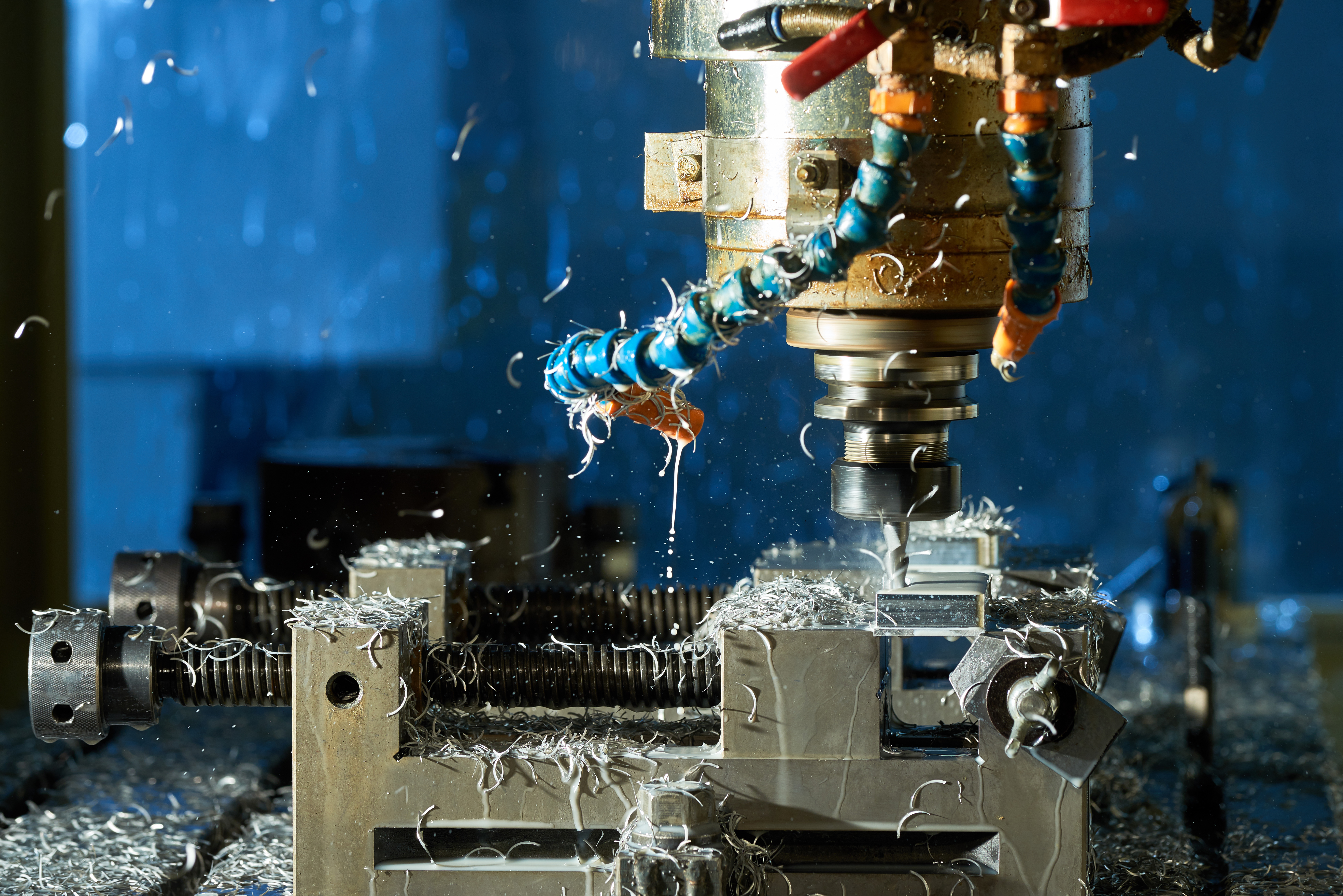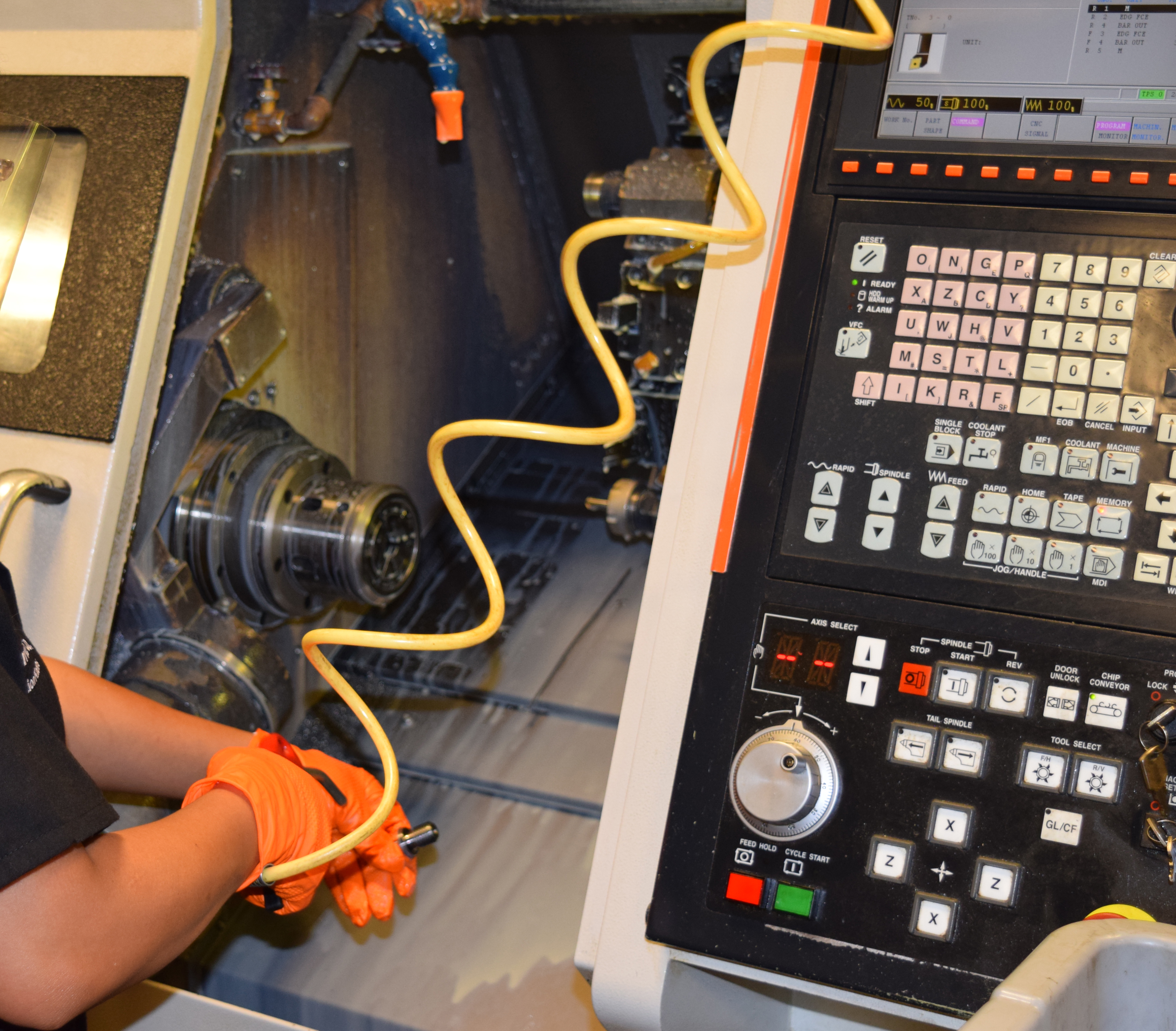The metal machining, fabrIcation and finishing industries must meet EPA and local wastewater requirements for  effluent. Under the Clean Water Act, the EPA has identified 65 pollutants and classes of pollutants as “toxic pollutants,” of which 126 specific substances have been designated “priority” toxic pollutants. Failing to meet these requirements can result in severe fines that quickly escalate.
effluent. Under the Clean Water Act, the EPA has identified 65 pollutants and classes of pollutants as “toxic pollutants,” of which 126 specific substances have been designated “priority” toxic pollutants. Failing to meet these requirements can result in severe fines that quickly escalate.
Typically, metal related industries rely on washing to get rid of residue, lubricant, oil, or acid, before, during, or after process steps. As a result, significant amounts of wastewater are generated. Wastewater is also created during processing such as metal refining, machining, grinding, quenching, tube forming, stamping, tumbling, and plating.
Most operators install a wastewater treatment system to separate contaminants from water. Traditional systems require multiple steps, a variety of chemicals and labor. Even when a process is automated, technicians will often have to monitor the equipment.
Although paying to haul away metal industry wastewater is an option, it is expensive. It is more cost effective to treat the industrial wastewater at its source, so treated effluent can go into a sewer and treated sludge passes a TCLP (Toxicity Characteristics Leaching Procedure) test and can be disposed of as non-hazardous waste in a landfill.
Complying with regulations is easier with automated, wastewater treatment systems. Such systems not only reliably meet regulatory wastewater requirements, but also significantly reduce costs, when the proper separating agents are employed such as the Cleartreat agent from Sabo Industrial Corp. in New York.
Automated treatment
Automated wastewater treatments help streamline production, usually with a one-step process. The systems eliminate the need to monitor equipment, separate suspended solids, emulsified oil and heavy metals, and encapsulate the contaminants, producing an easily de-waterable sludge in minutes.
The water is typically then separated using a de-watering table or bag filters before it is discharged into sewer systems or further filtered for re-use as process water. Other options for de-watering include using a filter press or rotary drum vacuum. The resulting solids are non-leachable and are considered non-hazardous, so will pass all required testing.
Systems are available as manual batch processors, semi-automatic, and automatic systems and can be designed as a  closed loop system for water reuse or to provide a legally dischargeable effluent suitable for the sewer system. A new, fully customized system is not always required. In many cases, it can be faster and more cost effective to add to or modify a facility’s current wastewater treatment systems.
closed loop system for water reuse or to provide a legally dischargeable effluent suitable for the sewer system. A new, fully customized system is not always required. In many cases, it can be faster and more cost effective to add to or modify a facility’s current wastewater treatment systems.
However, because every wastewater stream is unique to its industry and application, each wastewater treatment solution must be suited to or specifically tailored to the application. The first step is to sample the wastewater to determine its chemical make-up followed by a full review of local water authority requirements, according to Sabo.
The volume of wastewater is analyzed to determine if a batch unit or flow-through system is required. Other considerations include size restrictions.
Separating agents
Automated wastewater treatment equipment requires effective separating agents that agglomerate with the solids in the wastewater so the solids can be safely separated.
Because of the importance of separating agents for wastewater treatment, Sabo Industrial uses a special bentonite clay in a line of wastewater treatment chemicals called ClearTreat. This formulation breaks down oil and water emulsion, removes heavy metals, and promotes flocculation, agglomeration and suspended solids removal.
Bentonite has a large specific surface area with a net negative charge that makes it an effective adsorbent and ion exchange for wastewater treatment applications to remove heavy metals, organic pollutants, and nutrients. As such, bentonite is essential to effectively encapsulate the materials. This can usually be achieved in one-step treatment.
In contrast, polymer-based products do not encapsulate the toxins, so systems that use that type of separating agent are more prone to having waste products leach back out over time or upon further agitation.
Today’s automated systems along with Cleartreat separating agents can provide metal industry operators with a cost-effective alternative so they remain compliant with regulations. Although there is a cost to these systems, they do not require much attention and can be more economical than paying fines or hauling.
Sabo Industrial Corp. is a New York distributor of industrial waste treatment equipment and solutions, separating agents, bag filters, and accessories. For more information, phone 845-562-5751 or visit the company at www.saboindustrial.com.
Related Glossary Terms
- emulsion
emulsion
Suspension of one liquid in another, such as oil in water.
- grinding
grinding
Machining operation in which material is removed from the workpiece by a powered abrasive wheel, stone, belt, paste, sheet, compound, slurry, etc. Takes various forms: surface grinding (creates flat and/or squared surfaces); cylindrical grinding (for external cylindrical and tapered shapes, fillets, undercuts, etc.); centerless grinding; chamfering; thread and form grinding; tool and cutter grinding; offhand grinding; lapping and polishing (grinding with extremely fine grits to create ultrasmooth surfaces); honing; and disc grinding.
- quenching
quenching
Rapid cooling of the workpiece with an air, gas, liquid or solid medium. When applicable, more specific terms should be used to identify the quenching medium, the process and the cooling rate.

